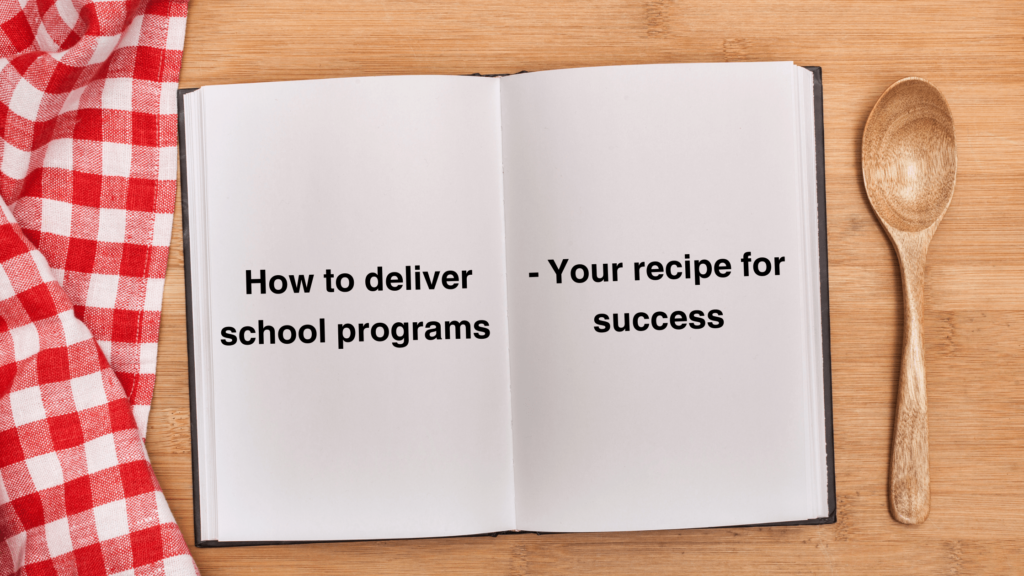How to deliver school programs
Your recipe for success

Riding the influencer wave: How to get your resources into the hands of Aussie teachers.
Creating school programs is like finding a perfect recipe – you can have all the ingredients, but the success is in the method! Here’s a step-by-step checklist to help make sure your school program ticks all the boxes. The proof is in the pudding, so they say!
- Curriculum linked – For your school program to be used by teachers, it must align with the curriculum and meet the required learning outcomes. It also needs to allow for flexibility, creativity and opportunities for differentiation. Expert teachers here at Kimberlin Education understand this essential ingredient and can provide clear conceptual links to the curriculum.
- Make sure it has a digital offering – It is crucial to have a digital component that allows teachers access when it suits them best. In the current environment, engaging digital resources that offer variety are in high demand, including videos, interactive activities, games, or learning management systems.
- Tailor your campaign to the right platform – Teachers are a very broad and diverse group and there is no “one size fits all” campaign (just like their students!). Make sure your content is tailored to the right audience and the right platform. For instance, there’s no point in advertising on Twitter if there’s not enough teachers there and you may find that the teaching group you’re after congregates on a Facebook group. Find out what your audience is after and what channels they are using. If the campaign is for primary school teachers in NSW, they’re most likely to have different problems and needs from teachers in secondary schools. This is where research and buyer personas will play a key role.
- Offers flexibility – It is important to incorporate flexibility within your program that is compatible with students with different learning styles and abilities. As every student is unique, an effective program should empower teachers to customize it according to the requirements within their class.
- Student-led learning – A focus on student-led learning where students are encouraged to ask questions and share their perspective on the subject, has proved to be effective. A school program that enables students to drive their own learning, actively participate and review their performance is more likely to succeed in improving student engagement.
- Real world experiences – When students can make connections between their real-life experiences and the program’s content, their learning becomes more meaningful and memorable. By engaging in such experiences, students can gain a deeper understanding of the subject matter and appreciate its significance in their lives.
- Opportunities for assessment and student feedback – Assessment opportunities are crucial in determining whether students are effectively comprehending the learned material. Assessment can take the form of formative or summative evaluations. Formative assessments are common in most schools and may include activities such as asking students to discuss what they have learned about a particular topic at various points throughout the program. By regularly assessing student progress, teachers can identify areas where students may be struggling and adjust their teaching methods accordingly, leading to improved learning outcomes.
Next steps?
Do you have everything you need to make an impact in schools? Get in touch with us today, to see how we can help bring your school program to life.




